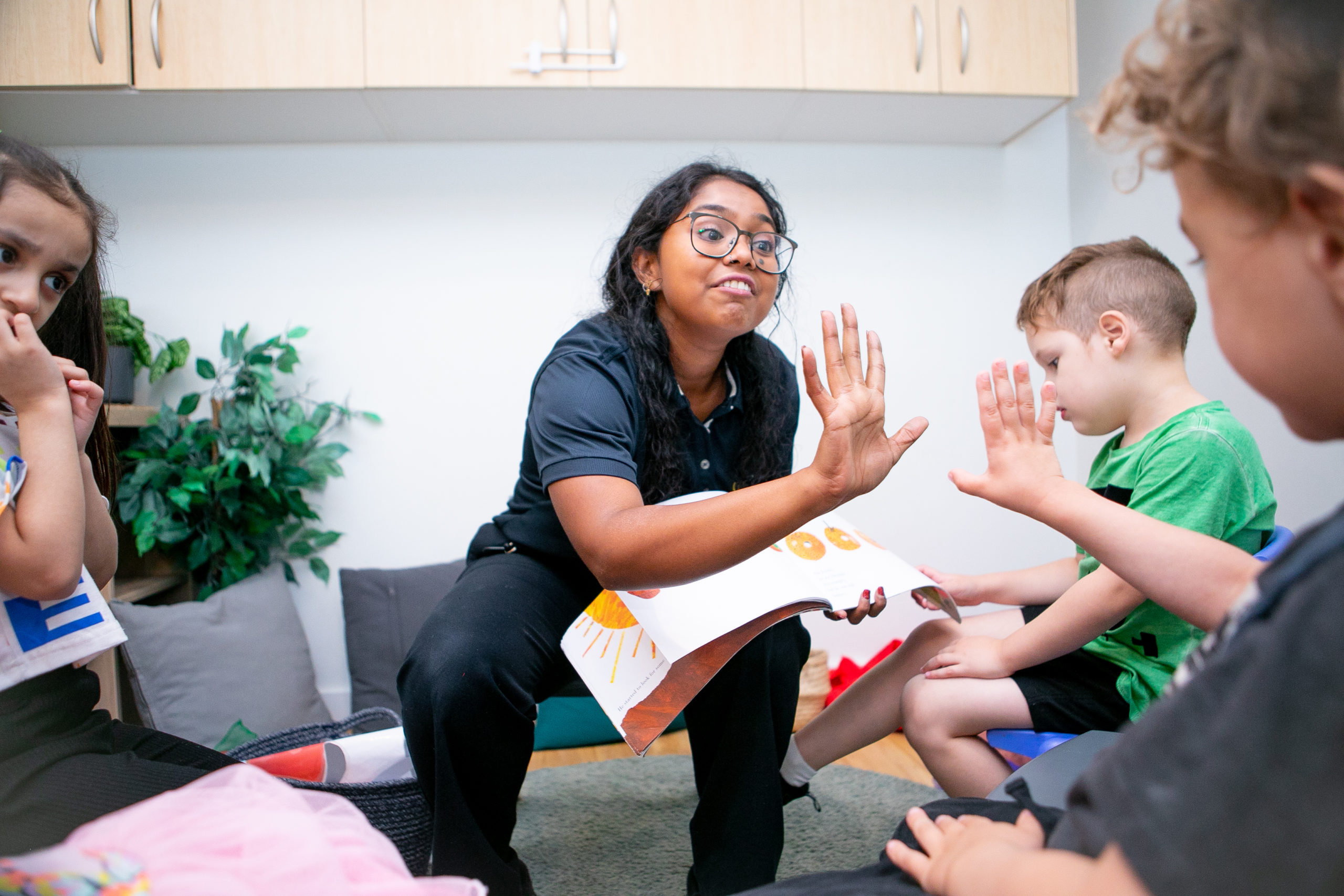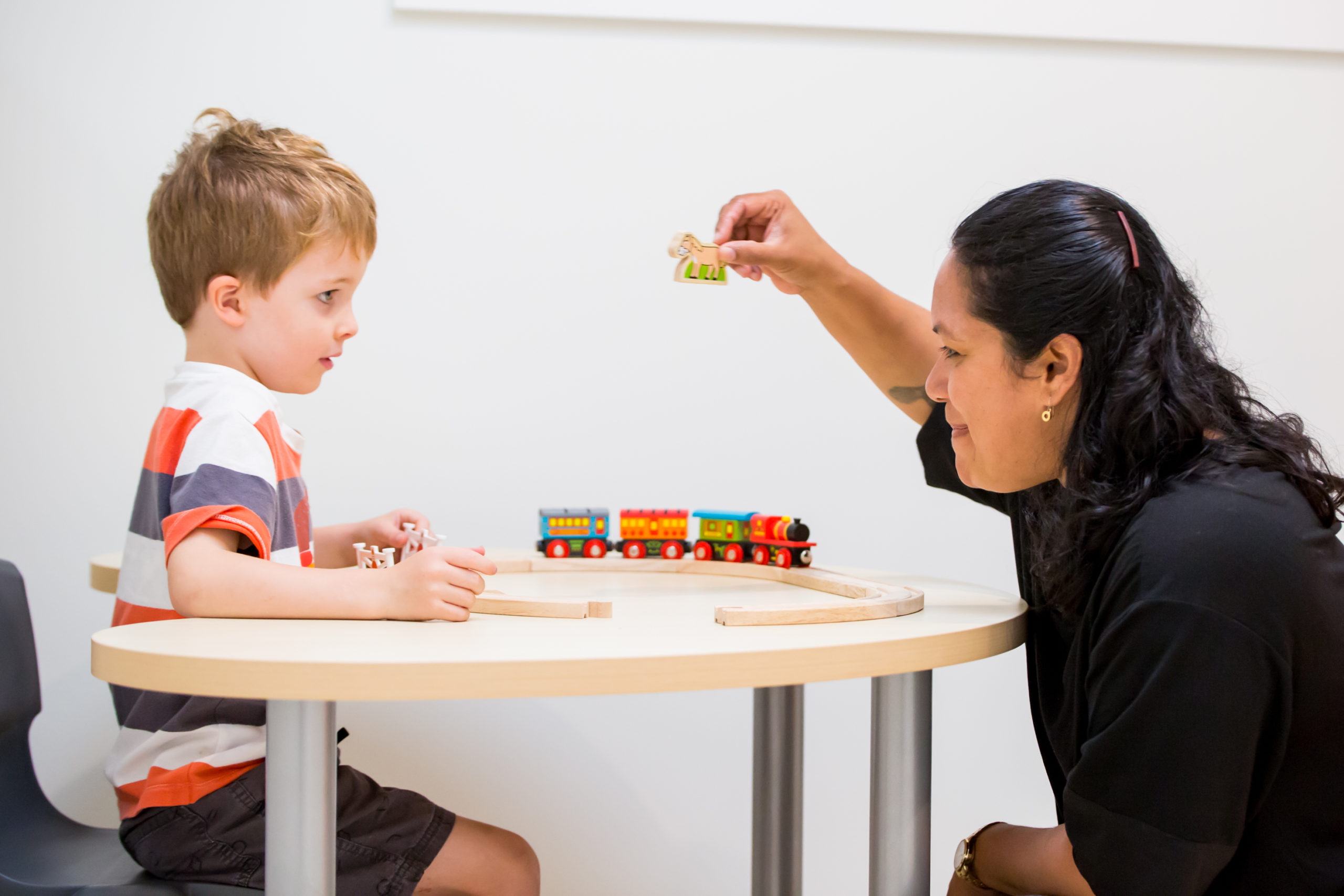When Your Child with Autism Echoes: what is going on?
Verbal imitation is a natural and important process of speech and language development. As children hear language around them, they copy the sounds, words or phrases and assign meaning to them in relation to what’s going on. After repeated practice, they can use the words flexibly and independently to communicate their own ideas and needs.
Echolalia, which usually describes a unique form of repetition of words or phrases in the very same and exact order or tone they have been heard, is often found in many children with ASD. Echolalia might seem confusing when it is non-communicative, delayed or irrelevant to the here-and-now context. For example, a child watches an episode of Sesame Street and later that day is heard reciting dialogues between Bert and Ernie or singing a snatch of the theme song. However, Echolalia can still be helpful as it could serve as a bridge for the child to develop intentional communication. Let’s unpack some secrets that Echolalia tells and see how we can work with it.
Fact 1: Echolalia represents a top-down language comprehension.
A child might remember and interpret a big chunk that the adult has said, e.g. “Come sit at the table”, as one meaning, i.e. “table” without getting the meaning of each individual word.
We can do this: Simplifying language input and highlighting the meaning of individual words with gestures or visuals will be beneficial to support the child’s learning from a bottom-up approach. For example, if a child echoes ‘Do you want juice’ after you have asked the question, you might simplify it by asking “Want juice?” showing them the object too. You could even provide a prompt like “Yes or No?” which could guide their response.
Fact 2: Echolalia serves a variety of communicative purposes.
Echolalia could be the way a child tries to make request, comment, protest, share interests or as simple as initiating or responding to an interaction.
We can do this: Try to identify the purpose and meaning of the child’s echolalia by paying attention to the child’s nonverbal acts, such as eye gaze, body language and gestures. Respond and clarify by modelling more appropriate vocabulary and sentence structures. Following the previous example, when the child echoes your question “Yes or No?” while reaching for the juice, a verbal model of “Yes, I want juice” could help reinforce their use of a correct response.
Fact 3: Echolalia can be a form of self-regulation, self-direction and self-expression.
Just like ordinary people would self-talk during stressful situations. Also some children echo to reduce anxiety, to express next step of action, or to express excitement in the moment.
We can do this: If adults could recognize and acknowledge the child’s intention or emotion, they would feel understood and supported. For example, a child might jump on a bed and repeat “Don’t jump on the bed” several times to themselves. Then gradually decrease the jumping. The adult could say “You want to stop jumping” to reflect the child’s intention. Or affirm their self-regulatory action by saying “Jumping finished”. This creates precious opportunities for parent-child interaction and bonding.
Written by: Sabrina Wong, Speech and Communication Consultant, CDI Therapist
References:
Davis K. J., (2017) Echoes of Language Development: 7 Facts About Echolalia for SLPs. Retrieved from https://blog.asha.org/2017/05/09/echoes-of-language-development-7-facts-about-echolalia-for-slps/





